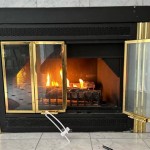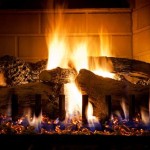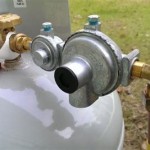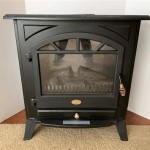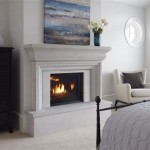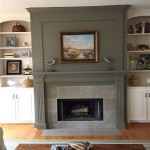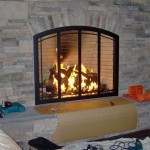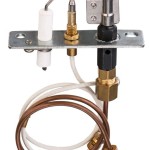Here is an article about antique electric fireplaces, following all the given instructions:
Antique Electric Fireplaces: A Historical and Technical Overview
Antique electric fireplaces represent a fascinating intersection of technological advancement and design aesthetics from the late 19th and early 20th centuries. These early electrical appliances were conceived as a cleaner, safer, and more convenient alternative to traditional wood-burning fireplaces. Their evolution reflects the burgeoning availability of electricity in homes and the changing preferences of homeowners seeking both comfort and style.
The earliest electric fireplaces were relatively simple devices, consisting primarily of a heating element, often a coil of resistance wire, and a reflector to direct the heat outward. The visual element, mimicking the appearance of a real fire, was typically achieved with painted glass or metal screens illuminated by incandescent light bulbs. These early attempts at creating a realistic flame effect were often rudimentary, but they captured the imagination of consumers eager to embrace the possibilities of this new technology.
The design of antique electric fireplaces incorporated prevailing decorative styles. Art Nouveau, with its emphasis on flowing lines and organic forms, heavily influenced early designs. These fireplaces often featured ornate metalwork, intricate carvings, and colorful glass panels. As the Art Deco movement gained popularity, electric fireplaces adopted a more streamlined and geometric aesthetic. Chrome accents, bold colors, and stylized motifs became common features. The cabinets housing the heating elements were often crafted from wood, metal, or combinations of both, reflecting the materials and techniques prevalent in furniture manufacturing during those periods.
The scarcity and cost of electricity meant that these early electric fireplaces were not universally accessible. They were typically found in wealthier households and apartments where electricity was already installed. Furthermore, the technology was still developing, so the heating efficiency and reliability of these early models were not always consistent. However, their novelty and the promise of a cleaner, more convenient heat source made them desirable appliances.
Over time, improvements in materials, manufacturing techniques, and electrical technology led to more efficient and aesthetically pleasing electric fireplaces. The introduction of more sophisticated flame simulation technologies, such as rotating drums with translucent materials and cleverly arranged lighting, improved the realism of the fire effect. Thermostatic controls allowed for more precise temperature regulation, enhancing user comfort and energy efficiency.
The Evolution of Flame Simulation
The core appeal of an electric fireplace lies in its ability to convincingly simulate the appearance of a real fire. The earliest attempts were rather basic, often involving painted glass or metal panels illuminated from behind by one or more incandescent light bulbs. The light would flicker or be partially obstructed to create the illusion of movement. While simple, this method was effective in creating a warm, inviting glow.
As technology advanced, more sophisticated techniques emerged. One common approach involved a rotating drum with translucent or semi-transparent materials that were painted or textured to resemble flames. A light source inside the drum would shine through the rotating material, projecting moving patterns of light and shadow onto a screen or reflector. The speed and pattern of the drum's rotation could be adjusted to create different flame effects.
Another method involved the use of strategically placed mirrors and lights to create an illusion of depth and movement. Colored filters and textured surfaces could be used to enhance the realism of the flames. These techniques required careful design and engineering to achieve a convincing effect.
Regardless of the specific method used, the goal was to create a visual illusion that would evoke the feeling of a real fire. This involved careful attention to color, texture, movement, and intensity. The success of these early flame simulation technologies paved the way for the more advanced and realistic electric fireplaces available today.
Materials and Construction Techniques
The materials used in the construction of antique electric fireplaces reflect the prevailing industrial capabilities and design trends of the period. Wood, metal, glass, and various composite materials were commonly employed, each contributing to the overall aesthetic and functionality of the appliance. Cabinetry was often constructed from hardwoods like oak, mahogany, or walnut, chosen for their durability and attractive grain patterns. Metal components, such as grilles, reflectors, and decorative trim, were typically made from cast iron, steel, or brass.
The construction techniques used to assemble these fireplaces varied depending on the manufacturer and the level of craftsmanship. Woodworking techniques such as dovetailing, mortise-and-tenon joinery, and hand carving were often employed to create sturdy and visually appealing cabinets. Metal components were typically cast, stamped, or fabricated from sheet metal. The electrical components were carefully wired and insulated to ensure safety and reliability.
The quality of the materials and construction techniques used in antique electric fireplaces often reflected the status of the appliance as a luxury item. High-end models featured premium materials, intricate detailing, and meticulous craftsmanship. More affordable models might have used simpler materials and less elaborate construction methods.
The study of the materials and construction techniques used in antique electric fireplaces provides valuable insights into the industrial history and design aesthetics of the periods in which they were manufactured. It also helps in the preservation and restoration of these historical artifacts.
Electrical Safety and Restoration Considerations
When dealing with antique electric appliances, including fireplaces, electrical safety is of paramount importance. These devices were designed and manufactured to meet the electrical standards of their time, which may differ significantly from modern safety codes. Before attempting to use or restore an antique electric fireplace, it is essential to have it inspected and evaluated by a qualified electrician specializing in antique electrical appliances.
One of the primary safety concerns is the condition of the wiring. Over time, insulation can become brittle, cracked, or frayed, increasing the risk of electrical shock or fire. The original wiring should be carefully inspected and replaced with modern, code-compliant wiring if necessary. The grounding system should also be checked to ensure that it provides adequate protection against electrical faults.
Another potential hazard is the heating element itself. Over time, the resistance wire can weaken or corrode, leading to overheating or failure. The heating element should be inspected for damage and replaced if necessary. It is important to use a replacement heating element that is rated for the correct voltage and wattage to avoid overloading the electrical circuit.
In addition to electrical safety, restoration efforts should also focus on preserving the original aesthetic and historical integrity of the fireplace. This may involve cleaning and repairing the cabinet, replacing damaged or missing parts, and carefully restoring the finish. It is important to use appropriate materials and techniques to avoid damaging the antique or compromising its value.
Restoring an antique electric fireplace can be a rewarding project, but it requires careful planning, attention to detail, and a commitment to safety. By working with qualified professionals and adhering to established restoration practices, it is possible to bring these historical appliances back to life while ensuring their safe and reliable operation.
The evolution of the electric fireplace underscores the ongoing quest for efficient and aesthetically pleasing heating solutions. From rudimentary heating coils and hand-painted glass to the advanced LED flame simulations of modern units, the electric fireplace continues to adapt to the needs and desires of homeowners.
While antique electric fireplaces may not be as energy-efficient as their modern counterparts, they offer a unique glimpse into the past. They serve as tangible reminders of a time when electricity was still a relatively new and exciting technology, and when designers and engineers were just beginning to explore its potential for enhancing everyday life.
Collecting and preserving antique electric fireplaces is a way to connect with this history and to appreciate the ingenuity and craftsmanship of the pioneers who shaped the early electrical appliance industry. These appliances are not just functional objects; they are also works of art that reflect the design sensibilities and cultural values of their time.

Acme Furniture Dresden Freestanding Electric Fireplace Vintage Bone White Finish 1pc 1ctn Com

Vendom Classic Fireplace Antique Pearl Fully Furnished

Mid Century Modern Vintage Freestanding Electric Fireplace In Red

Picardy Fireplace Antique Pearl Acme Furniture Cart

Windsor Electric Fireplace Or Insert

The Complete Beginner S Guide To Electric Fireplaces Portablefireplace Com

Antique Brass Electric Fireplace Historic House Salvage

Antique Cast Iron Fireplace Electric Gas Flamerite Fires

Vintage Style Fireplace Gives A Classic Feel To The Decor Electric Dimplex

Electric Fireplace By Classic Flame In Antique Walnut San Marco 28wm671 W501 Fireplaces
Related Posts

